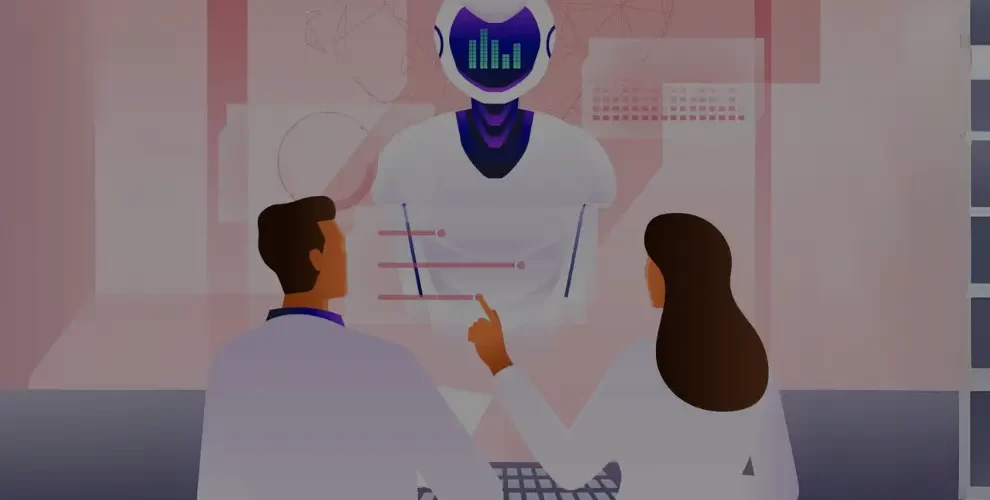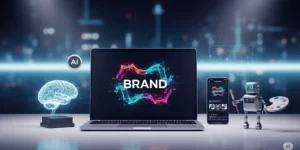
The Role of AI and Automation in Modern Recruitment and Resume Building
Table of Contents
With the world changing rapidly, AI and automated recruitment and resume-building systems have altered the interaction between job seekers and employers. The digital progress that increased the efficiency and innovation in screening candidates and the quality enhancement of resumes has set a new hiring paradigm.
This article discusses in-depth how AI and automation change recruitment and resume building, considers the benefits and difficulties of such a change from a technological perspective, and offers useful insights from which one may effectively glean work-related advantages.
The Shift from Traditional to AI-Driven Recruitment
Before integration, recruitment was a largely manual and somewhat tedious affair. Hiring managers had to sift through stacks of resumes, interview candidates extensively, and then spend hours arguing the pros and cons of the decision. But with the integration of AI and automation, it has blossomed into a more streamlined and data-driven recruitment process.
AI algorithms can scour resumes at scale, shortlist the relevant and inappropriate qualifications for particular candidates, and match them to job descriptions with superhuman accuracy. These automated systems could process hundreds or higher in thousands within minutes, intuitively limiting the time-to-hire. This is even more relevant for high-volume tech, customer assistance, or retail recruitment.
Recruiters are no longer merely talent finders. They are now data analysts, interpreters, and strategists. AI tools allow them to predict candidate success better, analyze cultural fit, and improve diversity in hiring.
Automation in Resume Building: A Game Changer for Job Seekers
The era of wondering if your resume is properly formatted and properly structured is behind us. Automated resume builders are now the most important tools available to job seekers. For many users, these apps leverage AI tools and technology to generate professional, ATS-optimized resumes based on industry and role type.
- Artificial Intelligence: Automated Resume Builders are comprised of the following components:
- Content Suggestions: The application will suggest professional language content, key bullet points, and accumulating action verbs based on the user’s career history, professional experience, and/or industry.
- Real-time Formatting: Where appropriate, automation should ensure that these resumes are consistently formatted, polished, and compliant with best practices.
- Applicant Tracking System Optimization: At a minimum, resumes will be screened for compliance with Applicant Tracking Systems (ATS).
- Custom Templates: AI-based applications can describe a resume format to be generated for a specific role and/or level of seniority.
One example is a resume maker app that combines intelligent design with keyword optimization to ensure your resume surpasses the ATS filtering and impresses human resource professionals.
How AI Enhances Resume Screening and Candidate Matching
Artificial Intelligence (AI) powered Applicant Tracking Systems (ATS) have become the norm for mid-to-large hiring. These systems will handle all the pre-screening before a human sees the resume. Using the job description’s skills and requirements, AI will scan resumes to ascertain skills and rank them based on how closely they match the job description.
The contributing aspects of AI capabilities for resume screening include:
- Keyword Search: AI will select and rank resumes with particular job-related keywords, skills, and phrases. Naturally, this capability implies that candidates must customize their resumes for each job posting.
- Experience Assessment: The system will utilize the resourcing history to analyze it with the historical work experience and the tenure of employment with previous employers, thereby deriving the relevance of experiences.
- Skill Assessment: Some AI technology is equipped with assessments and simulations to assess the skill set afforded by the candidate.
- De-Biasing: If programmed accurately, AI can reduce and limit unconscious bias by identifying applications or removing identity-based information before screening commences.
Although it raises concerns for fairness and transparency of AI-prescribed recruiting, there is no denying that AI will increase the speed and fluency of candidate-job matching. Candidates who understand how those systems work can gain a competitive advantage in the labor market.
Personalized Candidate Experience through AI
AI and automation are improving the efficiency of recruiters and the candidate experience. In a competitive job market with good talent, that added personalization may factor in candidates’ acceptance of an offer.
Here are some ways AI is enhancing the candidate journey:
- Personalized Job Matcher: Algorithms using user data (our history and background) can generate personalized job openings based on users’ skills, experience, and preferences.
- Automated Communication: Automatic emails and messaging confirming receipt of application, and further status, take away the candidate’s frustration and uncertainty.
- Interview Scheduling and Interview Feedback: AI scheduling tools allow for proper scheduling of interview times, including after the interview; they may even provide real-time feedback.
Companies that invest resources into improving a personalized candidate experience will get more engagement, better talent retention, and better employer branding.
Addressing the Challenges of AI and Automation in Hiring
While the recognized benefits of AI in recruiting are useful for companies, we cannot ignore the pitfalls of AI for recruiting. Understanding the risks is important for leveraging AI effectively while remaining ethically responsible.
Risks of AI in recruiting:
- AI Bias: AI’s training data will represent historical hiring data, including systemic bias. Most AI sources cannot offset or compensate for biased data, which means that any historic bias will be perpetuated in hiring decisions.
- Lack of Transparency: In the ATS, candidate experience, they often do not know how they were filtered. Companies need to understand better how bias affects the candidate experience and their perceptions of unfairness.
- Over-Reliance on Keywords: While companies determined a past role’s keywords were highly impactful, it does not mean the candidate unthinkingly follows those keywords in their resume. If an ATS doesn’t match the keywords, the candidate could be passed over in the applicant list, even if they are highly qualified.
- Technical Barriers: The candidate experience involves technical barriers. Not all job seekers are comfortable using various AI systems, products, or applications, or even know how or if it is relevant to articulate their resume to an employer.
To mitigate the impact of these risks, companies would need to audit their algorithms in terms of bias regularly, include diverse stakeholders when creating any systems or applications, and remain transparent with their recruitment practices.
The Growing Importance of Data in Talent Analytics
Regarding Talent Analytics, Hiring is all about recruiting people and gathering data. Hiring teams enlist data analytics and AI to develop analytics and report on every aspect of the hiring funnel.
The key applications of data that are used in recruiting include,
- Forecasting Performance: For example, several data points are analyzed to determine the associated employee history with their behaviors to data, which allows AI to make predictions on candidates with the likelihood of success within particular roles.
- Improving the Hiring Funnel: Companies can highlight weaknesses resulting in drop-off points in the hiring funnel and bottlenecks in the hiring process, because it is evidenced in the data.
- Accountability metrics around Inclusivity and Diversity: Companies use AI and data analytics to monitor inclusivity and diversity stored in data on candidate pools and the diversity in hiring.
Data is important because it covers insights and employees can make more informed decisions; it is permissive about privacy, consent, and transparency.
AI in Candidate Sourcing and Outreach
In addition to screening purposes, AI technologies are going beyond screening to change how recruiters source candidates. New smart recruiting platforms actively crawl online profiles, professional networks, and resumes on job boards to identify potential candidates, even those not looking for a job.
Automation in sourcing could include:
- Predictive Analytics: These tools evaluate career paths and predictions of new opportunities.
- Chatbots and Virtual Assistants: AI-powered bots can start conversations, answer questions, schedule interviews, and collect information needed before interviews.
- Candidate Relationship Management (CRM): AI could help recruiters keep engaging with passive candidates, i.e., sending relevant job alerts, content, or company news and updates.
This increased source of candidates means the most attractive talent could be identified and engaged even before the job is posted by competing employers. Job seekers should be more aware than ever that keeping a current online brand that addresses employer concerns, the screeners, could be the most critical thing a job seeker could do now.
Future Trends: What Lies Ahead for AI in Recruitment
AI’s evolution and the corresponding changes to the hiring ecosystem will likely continue. Be sure to be alert to these possible trends:
- AI Video Interviews: Tools that consider facial expressions, tone, voice, and micro-behaviors during virtual formatting are gaining popularity; however, they raise questions about fairness and privacy.
- Blockchain for Credential Verification: Some platforms combine AI and Blockchain to instantly verify a candidate’s academic and employment credentials, reducing fraud and trust.
- Hyper-Personalization in Employer Branding: AI tools now customize employer branding based on the target audience’s preferences to create meaningful engagement.
- Virtual Reality Assessments: Employers are experimenting with candidate simulations in virtual reality to demonstrate the candidate’s skills in contextualized immersive environments.
These trends demonstrate that we are on the threshold of a major paradigm shift in how talent will be found, evaluated, and hired.
Practical Tips for Job Seekers in the AI-Driven Job Market
Whatever the new landscape job seekers confront, they will succeed as they change their approach and leverage the offered tools.
Some key suggestions:
- Understand how ATS works: Understand applicant tracking systems and create an ATS-compliant resume beforehand.
- Use resume software: Use of smart tools could create a professional and optimized resume that helps you stand out from the crowd; consider either a resume maker application or a resume generation application.
- Establish an online presence: Update your LinkedIn profile, join industry-specific job boards, and keep your online portfolio or personal website current.
- Continue to dive into information and learning, don’t be left behind: Stay on top of new tools and technologies introduced in your industry. Upskilling with all the digital tools you became familiar with will give you a leg up.
- Be Authentic & Intentional: It is great that automation makes going through the application process easier and convenient, but don’t lose track of authenticity. Your resume should accurately reflect your experience and goals, and you should tailor your resume with a smart human-led strategy.
Final Thoughts: Embracing the AI Revolution in Recruitment
AI and automation for recruitment and resume building is not a far-off idea—it’s a reality. The change represented by the technology is transforming every element of how companies hire people and how people present themselves to the job market, for good. Although some areas still need improvement (bias, transparency, accessibility, etc.), there’s no doubt that AI and automation can elevate efficiency, personalization, and predictive insight to a new level of transformative impact.
Adopting this new mindset means understanding how to use these tools for both parties. For employers, it means using AI to speed up their hiring. For job seekers, it means using creative AI technology to stand out.
Want to keep up with our blog?
Our most valuable tips right inside your inbox, once per month.
Sajan Prajapati
Sajan Prajapati is a content writer and digital marketing strategist specializing in SEO and content optimization. With over seven years of experience helping brands grow their online presence, he focuses on crafting engaging blog posts, articles, and product descriptions that resonate with readers and rank well on search engines. Sajan regularly writes for industry-leading blogs and enjoys sharing tips on content marketing and effective storytelling.





